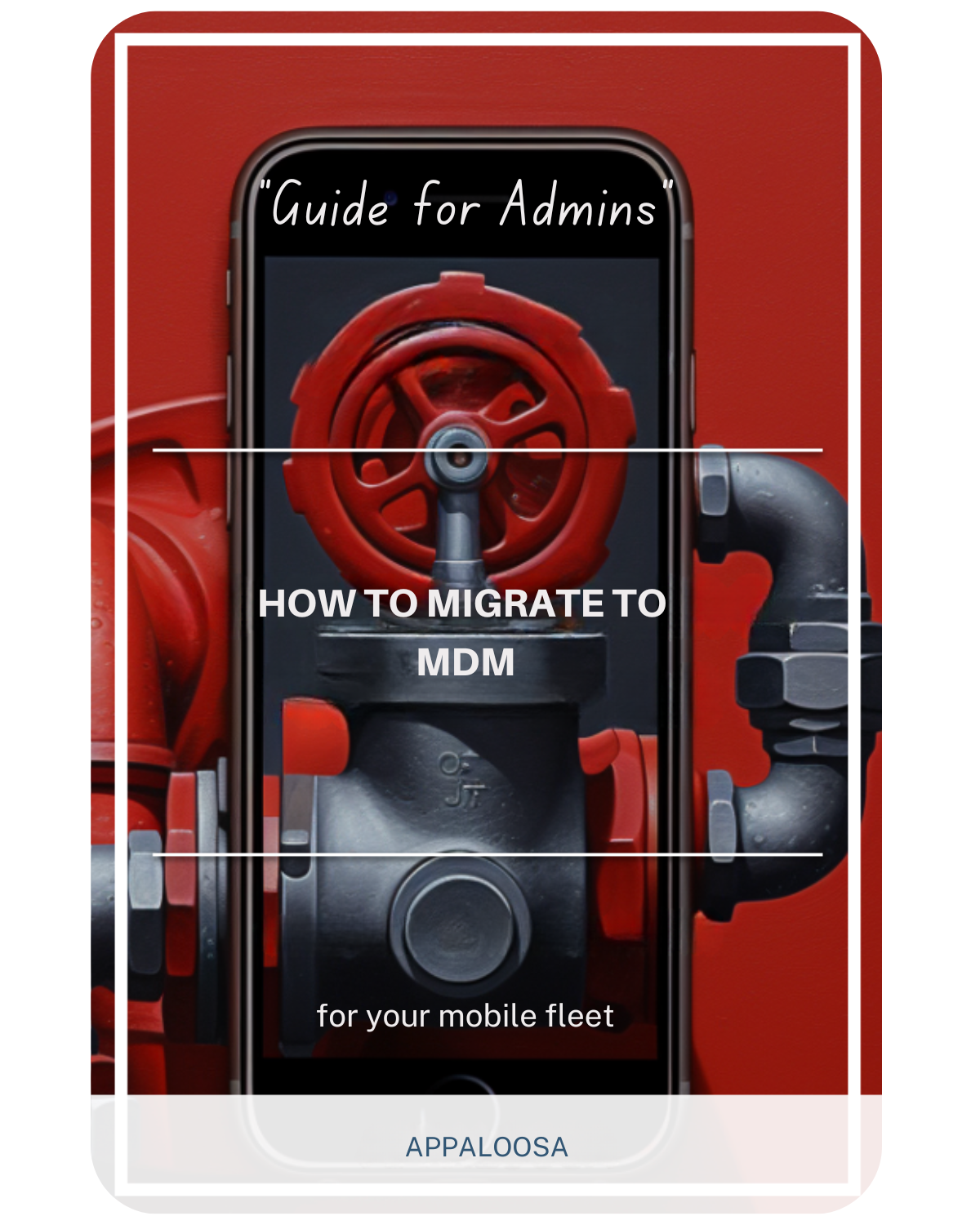Types of MDM Migrations: A Comprehensive Guide

The landscape of Mobile Device Management (MDM) is continuously evolving, and with it comes the need for organizations to adapt and reassess their MDM strategies. This guide aims to navigate you through the labyrinth of MDM migration scenarios, ensuring that your organization chooses the most suitable migration path for optimal security, functionality, and Return on Investment (ROI).
Note: this article is part of our guide "How to Migrate Your Mobile Device Fleet to Mobile Device Management"
Migrating From an Existing MDM Solution
Why Migrate?
When organizations consider migrating from one MDM solution to another, they often find themselves caught in a complex web of reasons. Factors such as cost efficiencies, better feature sets, or aligning with business transformations are commonly cited as triggers for migration. Sometimes, the decision to switch can be as simple as finding a cheaper solution with similar features. However, it is important to remember that while a less expensive solution may seem promising, the migration process itself incurs costs that can affect profitability in the short or long-run.
Navigating from an existing MDM system to another is far from a walk in the park. Organizations often underestimate the complexity of the process, failing to consider potential data loss or operational interruptions. The migration process often requires you to do a full device reset before enrolling into your new MDM. Moreover, different MDM platforms can have unique sets of features, and not all functionalities may have a one-to-one mapping, causing feature gaps during migration.
Steps for a Smooth Migration
Planning and execution are crucial for successful migration from an existing MDM system. First, organizations need to conduct an audit of their current setup to understand what features they use and what data they need to migrate. A parallel run of both the existing and new MDM systems is advisable to pinpoint potential issues. Data backup is non-negotiable, and employing a phased approach—migrating a subset of devices initially—can provide invaluable insights into potential roadblocks.
Migrating From No Management to MDM
The Urgency of MDM
In an era where data breaches and cyber threats are just one malicious email away, operating without a robust MDM system is like walking on a tightrope without a safety net. The lack of device management exposes your organization to unnecessary risks, from data leaks to unauthorized access. Thus, transitioning to an MDM system isn't a matter of choice but a necessity for businesses that value their data and operational integrity.
Preparing for the Transition
Before diving into the MDM waters, an organization needs to take stock of its existing device inventory. Assessing the types, configurations, and usage patterns of devices helps in choosing an MDM solution that fits like a glove. Additionally, compliance needs and the scalability of the MDM solution should factor into the decision-making process.
How to Choose the Right MDM Solution
Picking the best MDM solution is pivotal for ensuring a smooth migration and long-term success. Features to consider include device compatibility, ease of integration with existing systems, scalability, and of course, cost. Organizations must also scrutinize the security features offered, such as data encryption, remote wipe capabilities, and real-time monitoring.
Technical Aspects of MDM Migration
Compatibility Checks
Before making the leap, organizations must ensure that their device fleet is compatible with the new MDM system. The operating systems in use, namely Android and iOS, could have different requirements or compatibility issues. It's essential to conduct a thorough compatibility check to avoid unexpected hurdles during the migration process. Before proceeding with the migration process, it is crucial to proactively identify if any devices in your fleet require hardware or operating system upgrades or any specialized support.
Data Backup and Transfer
Organizations hold sensitive and vital data that needs to transition safely during migration. Failing to backup data appropriately can lead to irreversible data losses that may have legal and operational repercussions. Migrating data securely while maintaining its integrity is crucial.
Testing Phases
Migration is not a one-shot endeavor. Organizations must allocate time and resources to test the new MDM solution rigorously. Initial testing should occur in a controlled environment with a small subset of devices. Once the test migration is successful, a broader rollout can take place. Testing ensures that the new MDM system meets organizational requirements and helps in identifying any adjustments or custom configurations that might be necessary.
Conclusion
MDM migration is a significant undertaking, filled with intricacies that require meticulous planning and thoughtful considerations. Whether you're transitioning from an existing MDM platform or implementing management for the first time, it is crucial to approach the process with a well-defined strategy. This guide aims to provide you with the necessary strategies to ensure a seamless migration, minimizing risks and laying the foundation for long-term success with your chosen MDM solution.
The type of MDM migration your organization chooses depends on various factors, including your current infrastructure, operational requirements, and overall business objectives. When executed effectively, a migration can enhance operational efficiencies, strengthen security measures, and deliver a promising ROI that aligns with your initial projections.
If you're seeking a detailed roadmap to assist you in this process, be sure to explore our comprehensive pre-migration checklist in another article. It is designed to cover all aspects and can serve as your go-to guide for a smooth migration experience. For further guidance and a personalized consultation, do not hesitate to reach out to our team of experts at Appaloosa.
